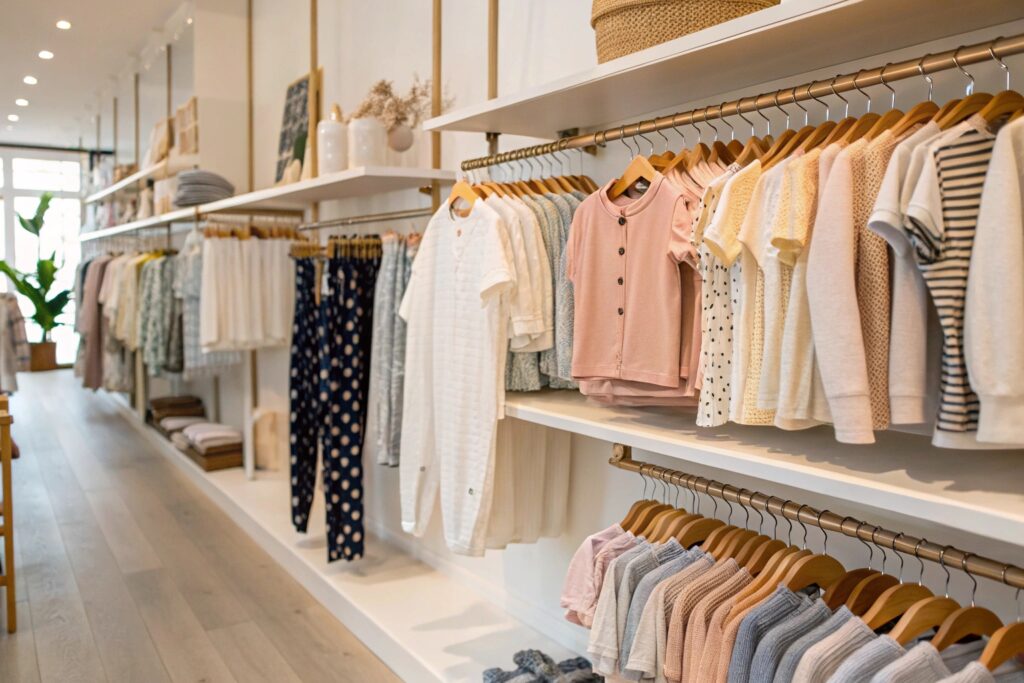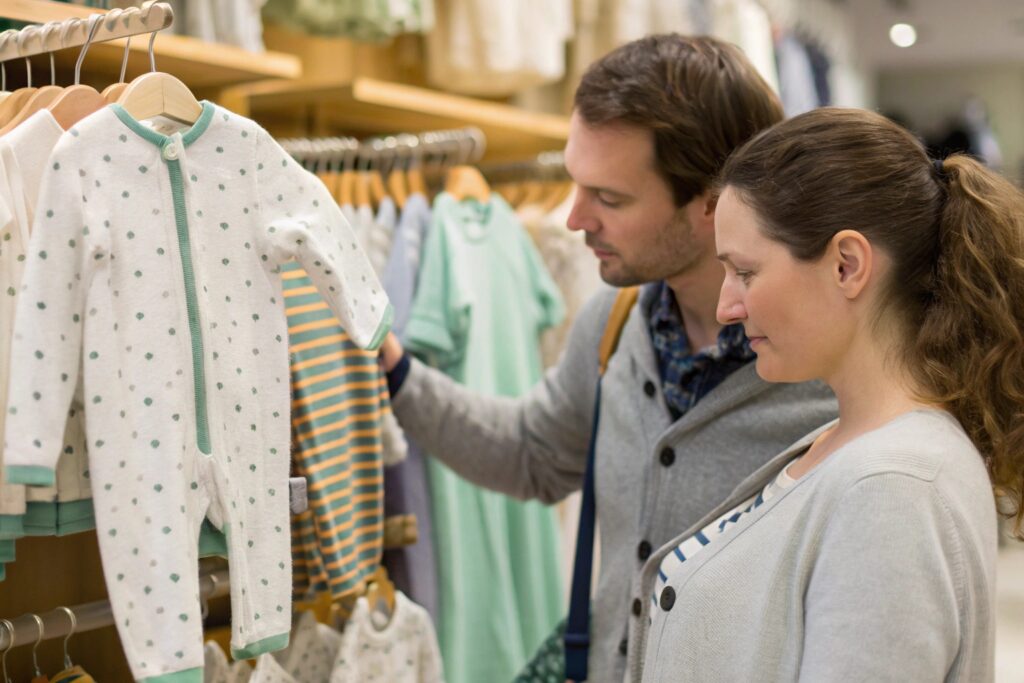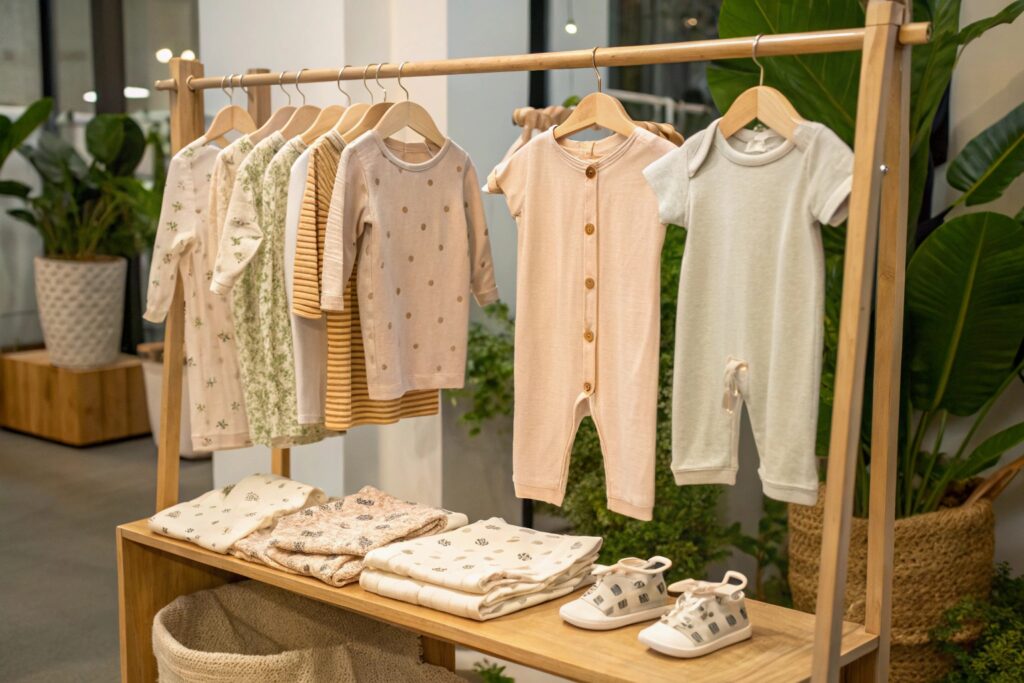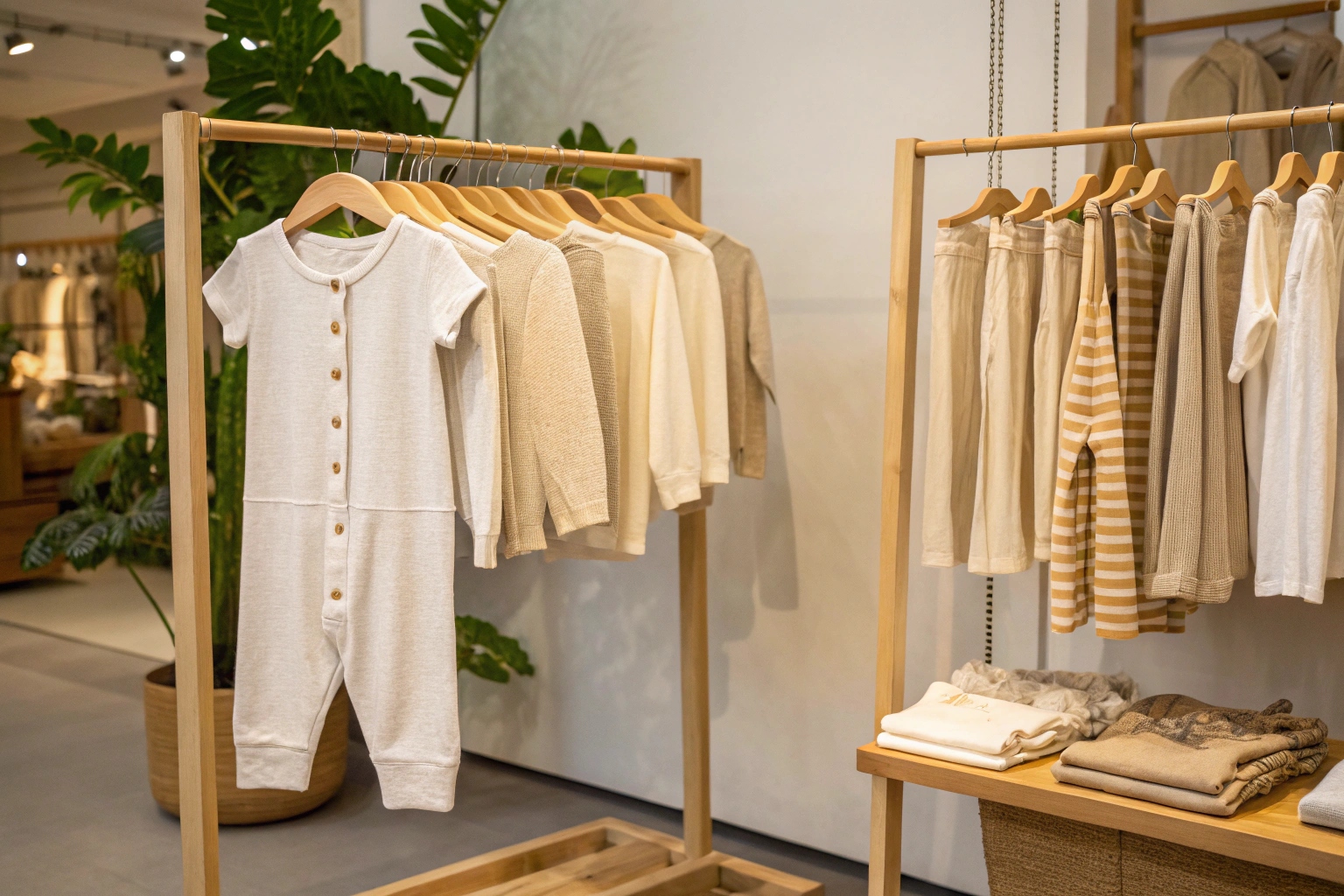Parents today want more than cute outfits—they want safe, chemical-free clothing for their children. That shift has turned organic kidswear from a niche into a booming global industry.
The global organic kidswear market is valued at over $10 billion in 2024, with strong annual growth driven by eco-conscious parenting, health concerns, and premium brand positioning.
In this article, I’ll break down the size, growth, demand drivers, and comparisons between organic and conventional kidswear markets.
Current Size of the Organic Kidswear Market?
Once a niche category, organic kidswear has now become a major player in the global children’s fashion scene.
As of 2024, the organic kidswear market is estimated to be worth $10–12 billion globally, with North America and Europe leading demand for certified organic baby and children’s apparel.

Key regional breakdown:
| Region | Market Size (Est.) | Highlights |
|---|---|---|
| North America | $4.2 billion | High awareness, retail expansion |
| Europe | $3.5 billion | Strong GOTS/GREEN certifications |
| Asia-Pacific | $2 billion | Growing demand from urban parents |
| Middle East/Africa | $0.5 billion | Premium brand imports |
Product categories in demand:
- Organic baby bodysuits and onesies
- Newborn pajamas and swaddles
- Organic toddler sets and dresses
- Eco-friendly school basics (tees, joggers)
At Fumao, we’ve seen organic fabric orders rise significantly over the past two years—especially from startup brands targeting modern parents.
Growth Rate of Organic Baby Clothing Industry?
Organic babywear is growing fast—and isn’t slowing down anytime soon.
The organic baby clothing segment is growing at a CAGR of 9–11%, outpacing the overall children’s apparel market, as more parents prioritize health, safety, and sustainability.

Year-on-year growth drivers:
| Year | Key Growth Factors |
|---|---|
| 2020–2021 | Pandemic awareness of health and hygiene |
| 2022 | Rise of eco-focused DTC baby brands |
| 2023 | Increased GOTS-certified fabric supply |
| 2024 | Gen Z parents entering the baby market |
Forecast:
- Expected to reach $18 billion by 2028
- Growth strongest in online channels and organic multi-packs
- Babywear leads, followed by toddler basics and unisex playwear
As suppliers, we support brands with OEKO-TEX® and GOTS-certified organic cotton to meet these rising expectations.
What’s Driving Demand for Organic Kidswear?
So why are more parents switching to organic? It goes beyond just buzzwords.
The demand for organic kidswear is driven by health-conscious parents, skin sensitivities, environmental concerns, influencer marketing, and the rise of premium baby lifestyle brands.

Top demand drivers:
| Reason | Description |
|---|---|
| Skin safety | Babies have sensitive, absorbent skin |
| Organic farming awareness | Avoids pesticide exposure, water-saving crops |
| Brand transparency | Labels now show full supply chain traceability |
| Eco-conscious parenting | Shift toward low-waste, sustainable living |
| Instagram-worthy fashion | Neutral, earthy baby looks gaining popularity |
Who’s buying?
- Millennial and Gen Z parents
- Higher-income households
- Health-focused moms (frequent buyers of organic food + skincare)
- Gifting market (baby showers, birthdays, newborn sets)
Brands that offer organic collections with modern aesthetics are especially successful in connecting with today's parents.
Organic vs. Conventional Kidswear Market Share?
Organic kidswear is still a smaller portion of the market—but its influence is growing quickly.
Organic kidswear makes up roughly 8–10% of the global children’s clothing market, but its share is expected to rise steadily as more brands and retailers add eco-friendly lines.

Side-by-side comparison:
| Feature | Conventional Kidswear | Organic Kidswear |
|---|---|---|
| Market Share (2024) | ~90% | ~10% |
| Price Point | Low to mid | Mid to high |
| Fabric Source | Regular cotton, poly blends | GOTS-certified organic cotton |
| Chemical Usage | Dyes, bleaches, finishes | Limited or none |
| Growth Rate | 3–5% annually | 9–11% annually |
What's changing?
- Mass retailers (like H&M and Zara) now offer organic basics
- Baby boutiques are going fully organic by default
- More suppliers are shifting to certified organic yarn options
At Fumao, we help brands transition by offering parallel collections—one in conventional cotton, and one in organic—so they can compare market response before scaling.
Conclusion
The organic kidswear market is booming, driven by eco-aware parents and premium-conscious brands. While still smaller than conventional clothing, it’s growing fast and becoming the new standard for baby and toddler wear. If you're starting a kidswear line, now’s the time to go organic and lead the change.










